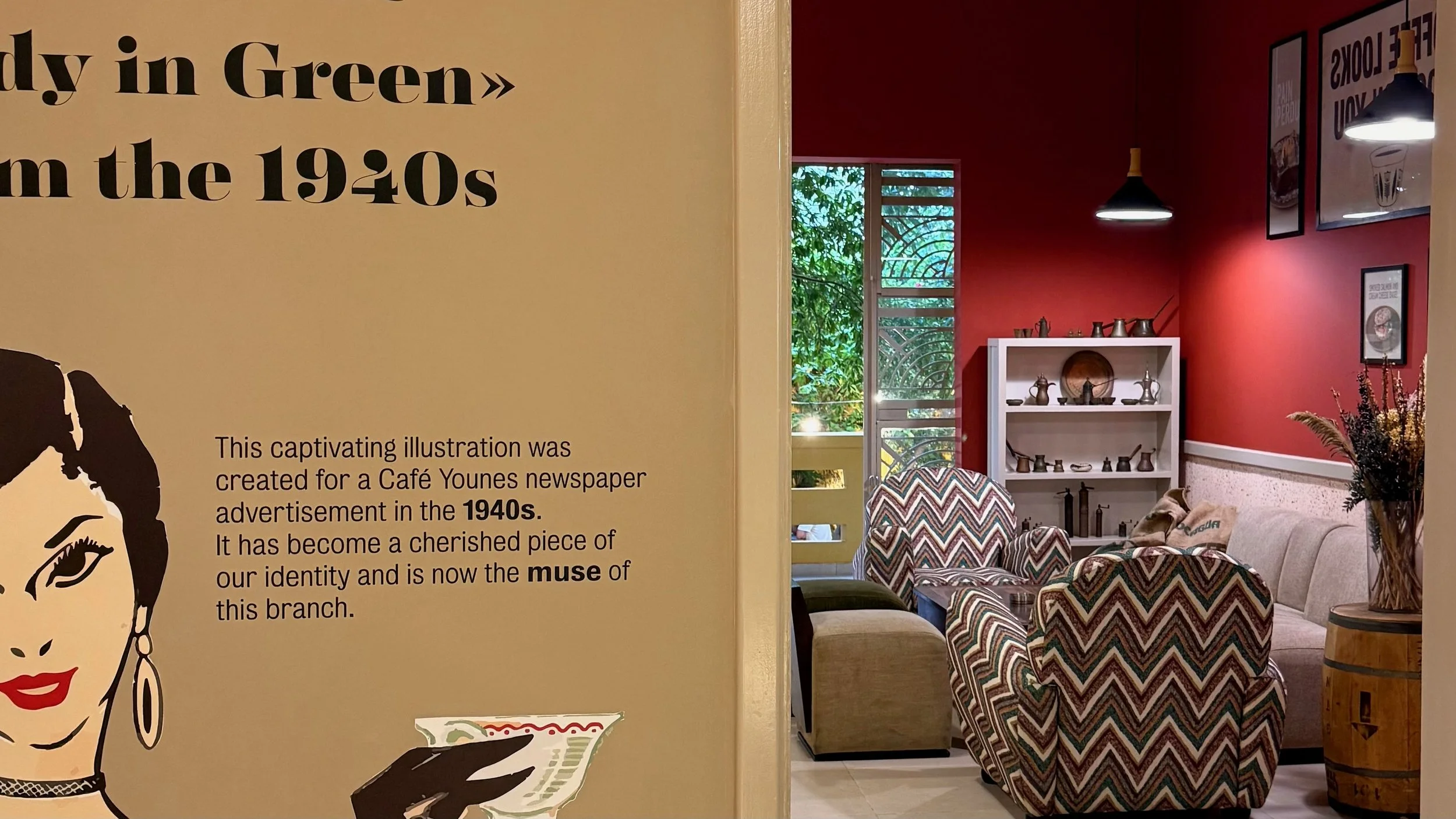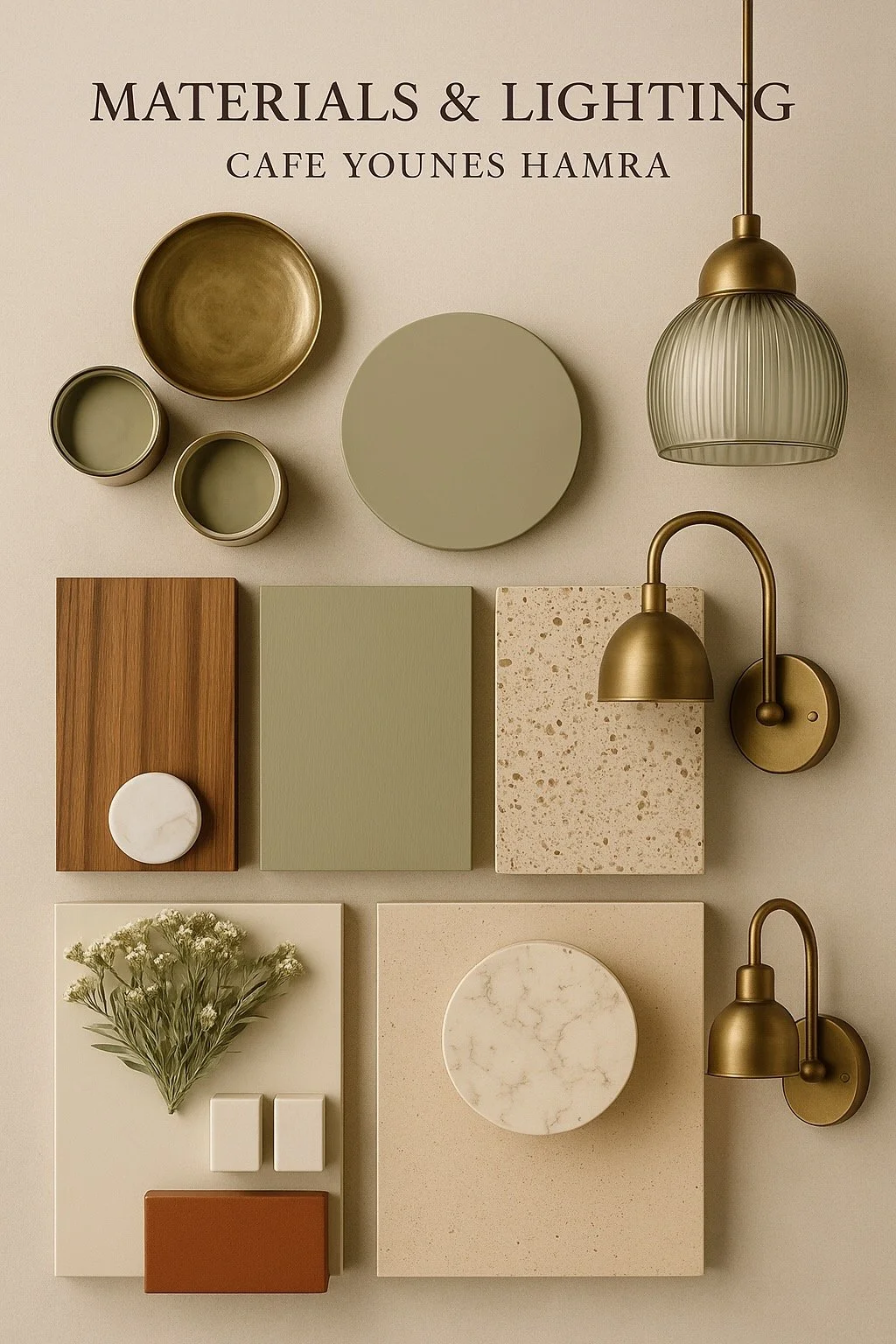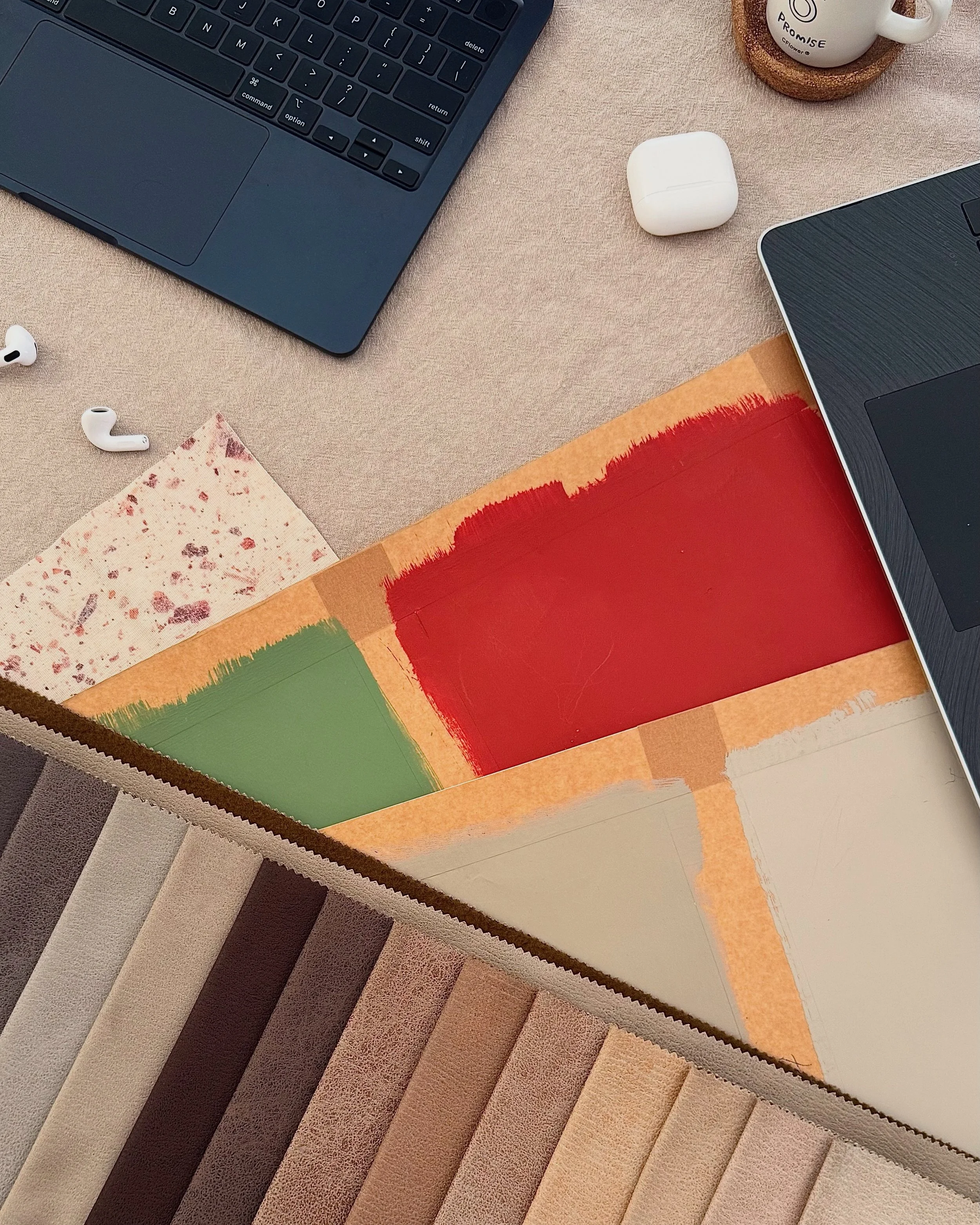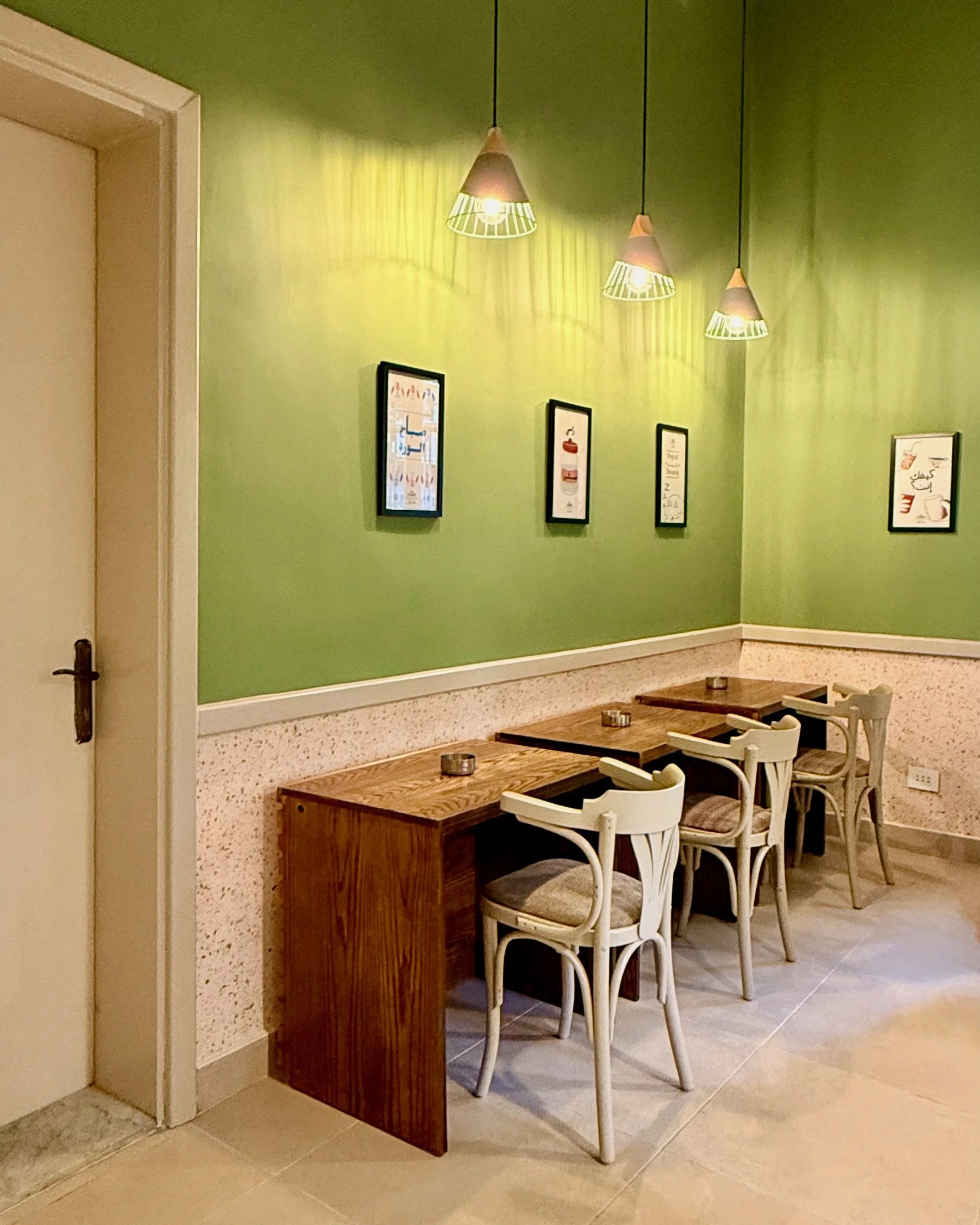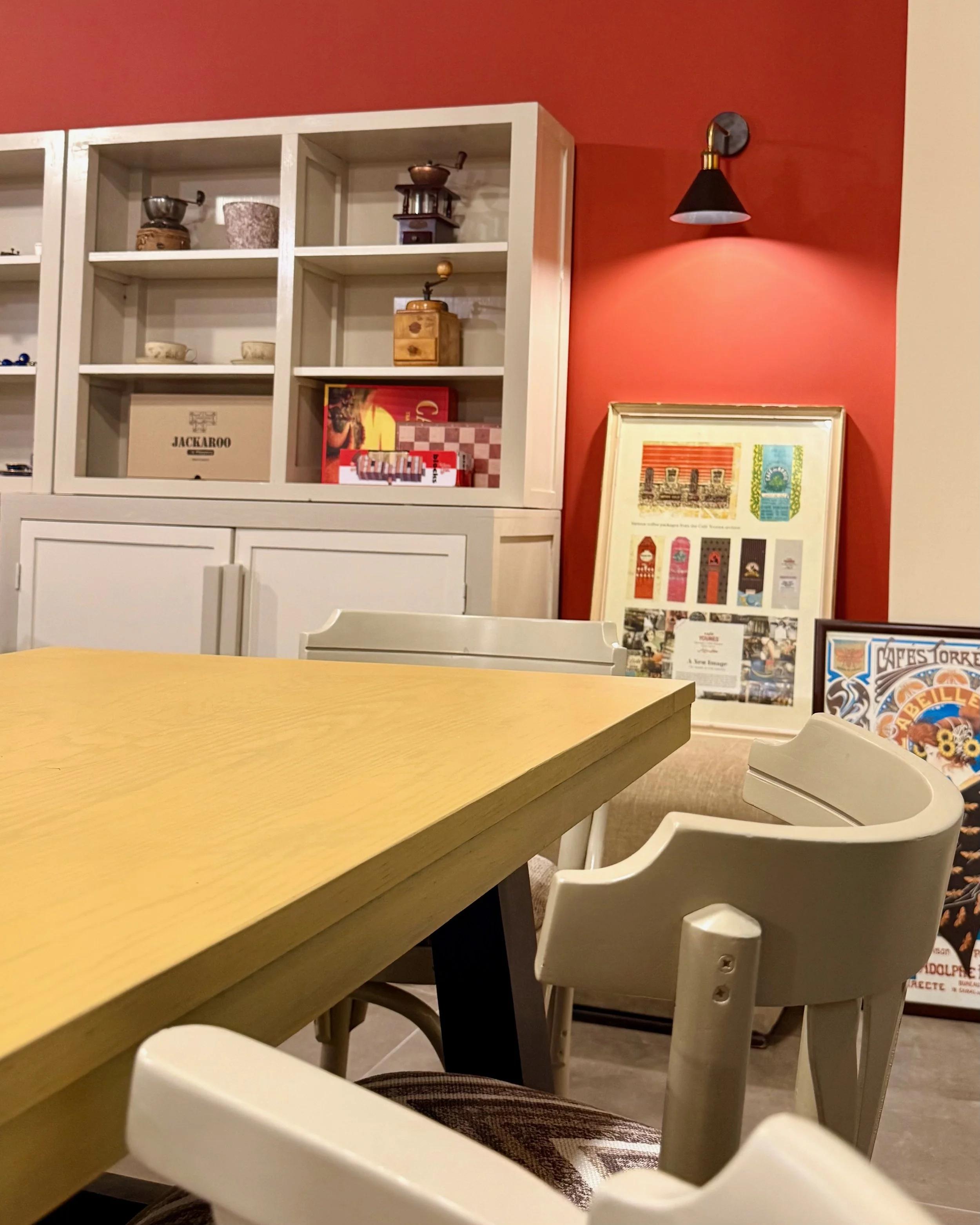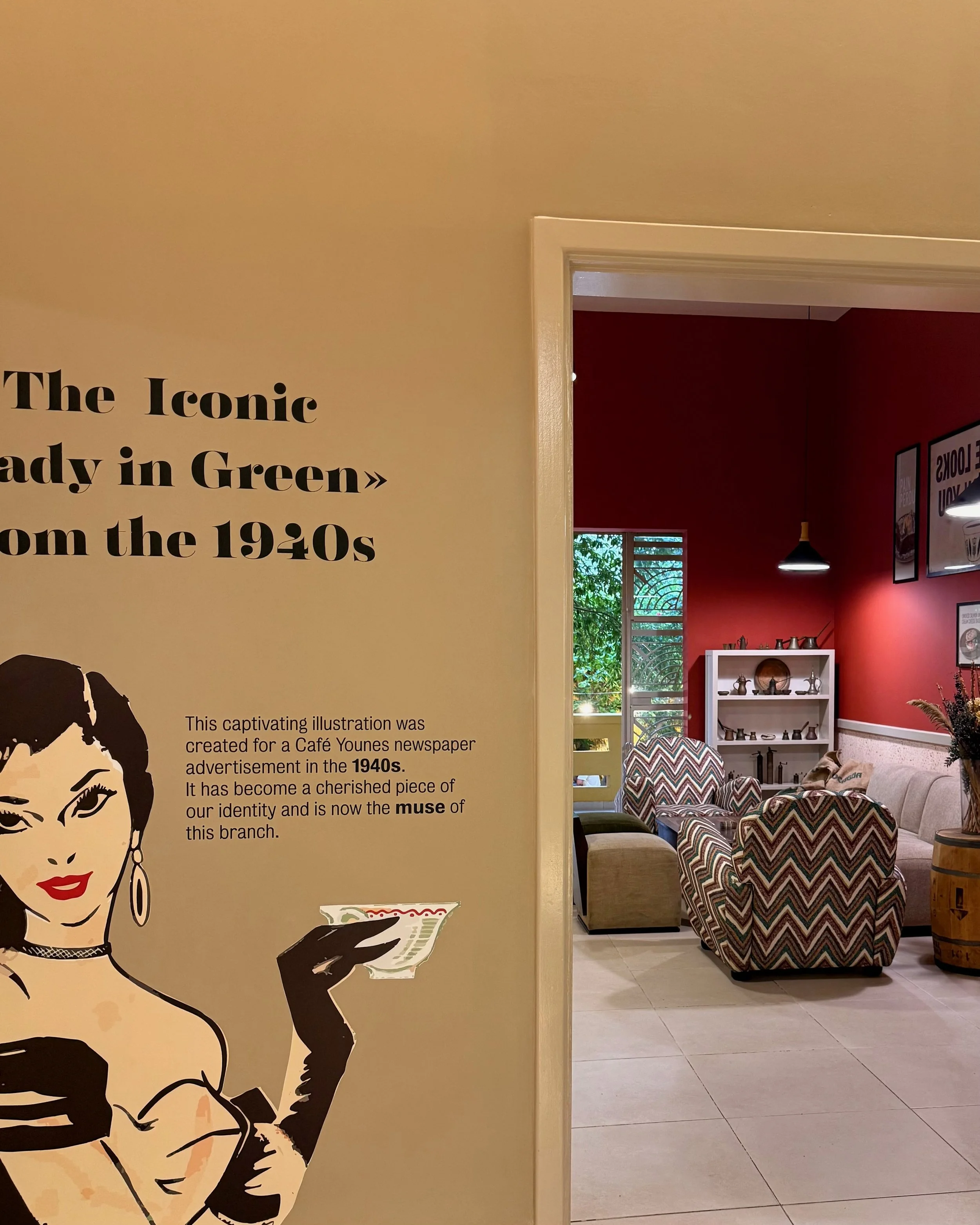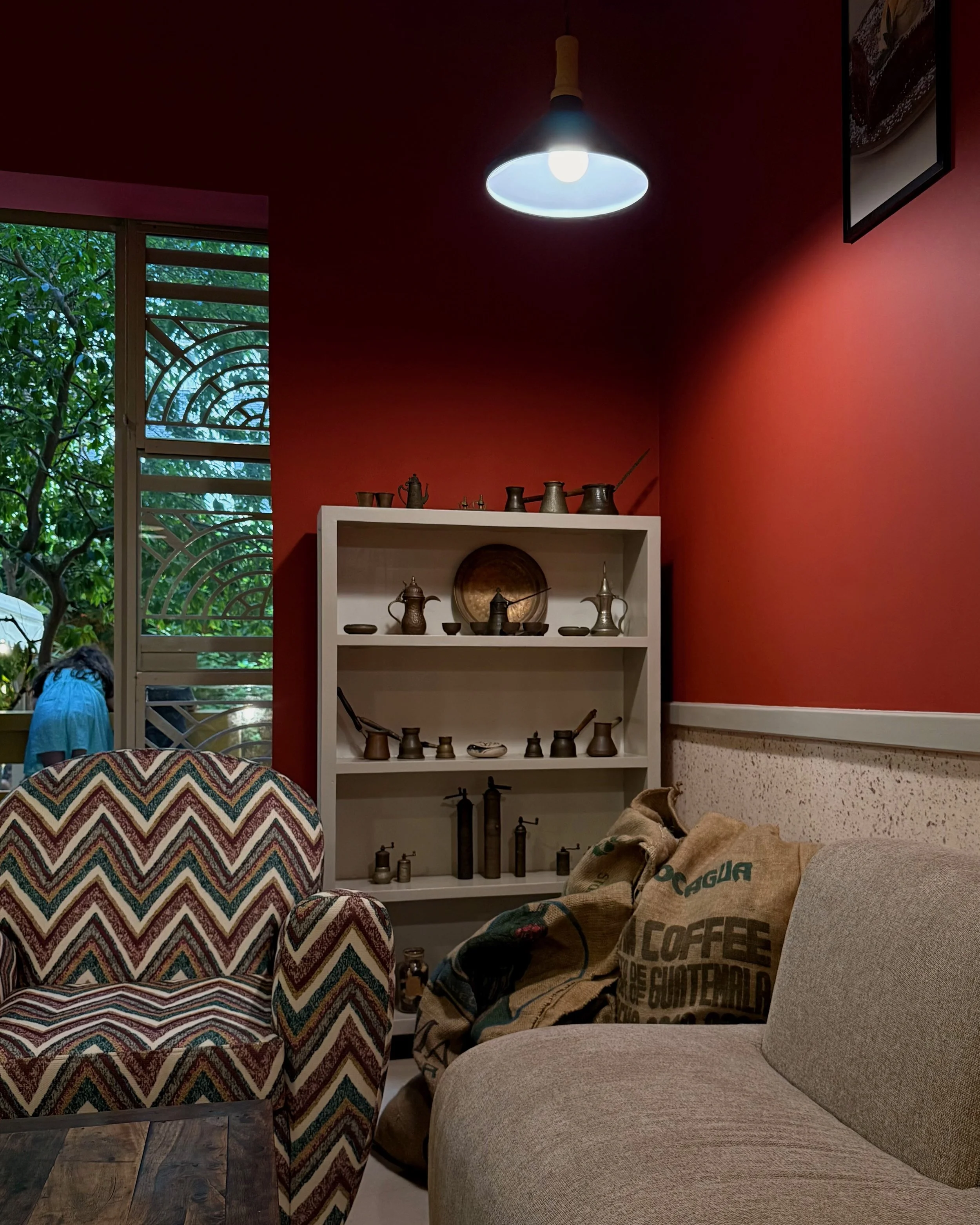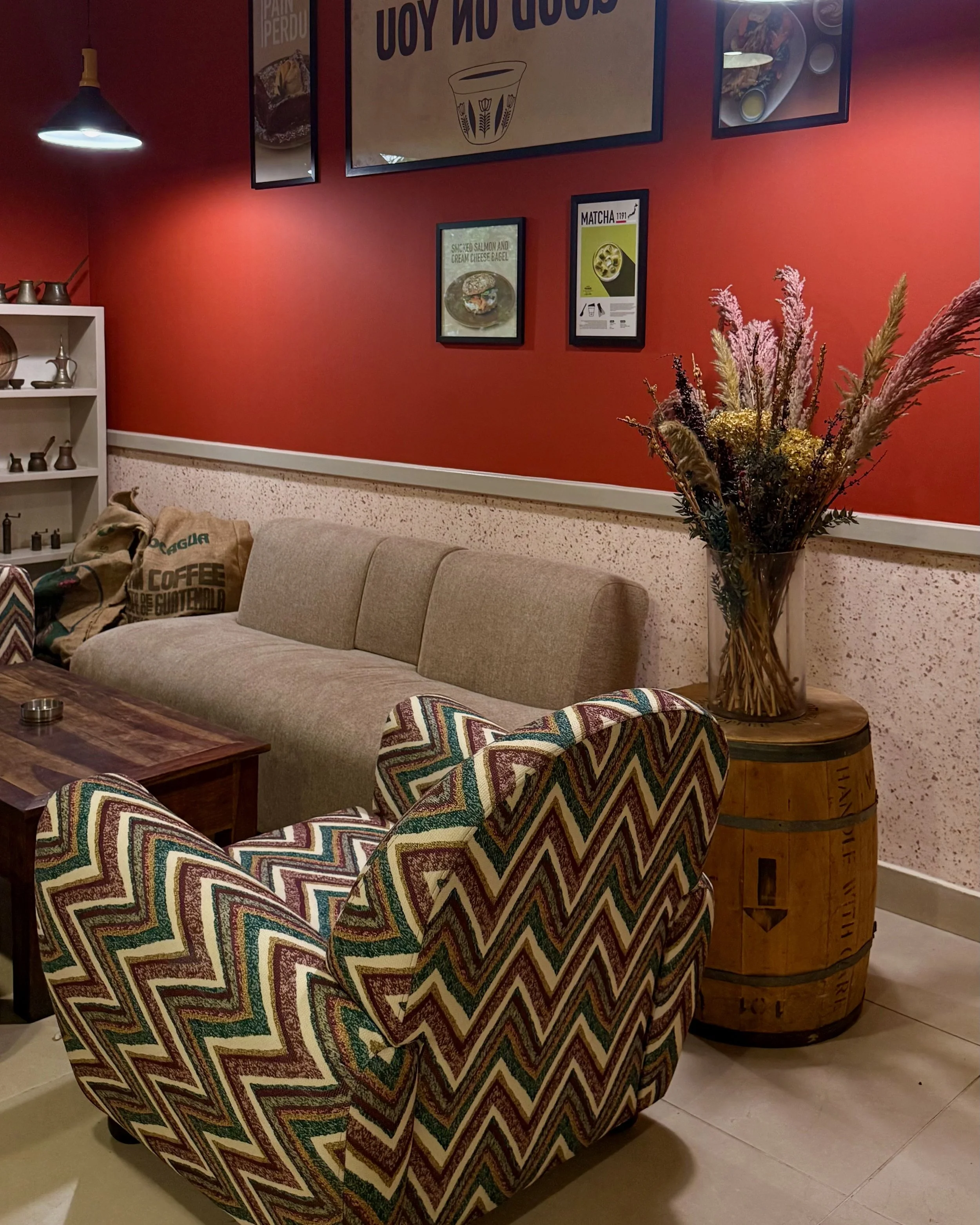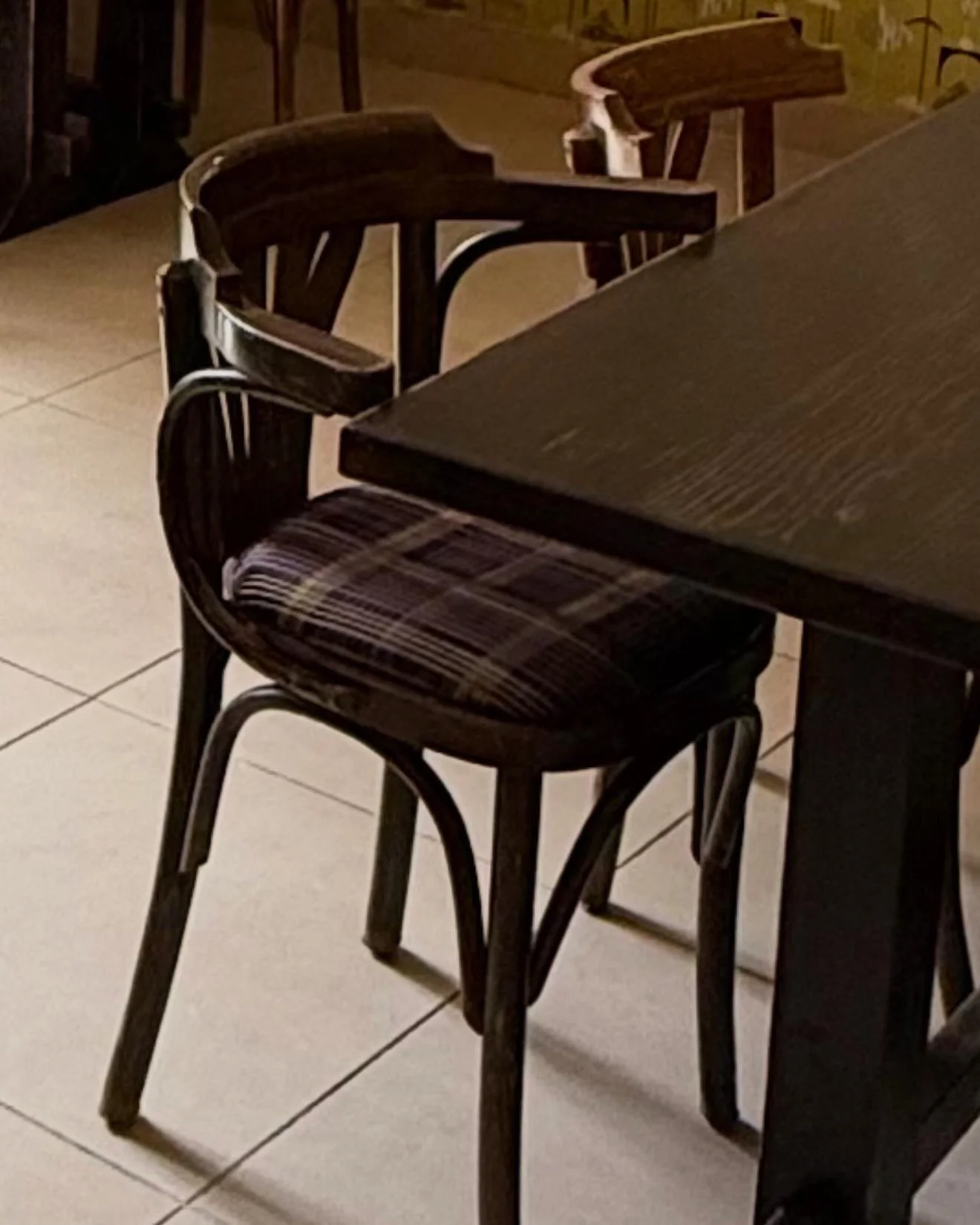A Space That Tells a Story: Inspired by a 75-Year-Old Café Younes Poster
Its bold typography, rich colors, and vintage illustration spoke of generations gathering over coffee in Beirut. That single image became the heart of our concept for the Hamra branch. The goal wasn’t to create a trendy new café; it was to design a space that tells a story; one rooted in heritage, shaped by memory, and ready to welcome the city today.
A Vintage Poster That Defines the Brand
The poster wasn’t just decoration. It was a window into Café Younes’ history; an invitation to step back into a time when cafés weren’t just stops for a quick coffee, but places where ideas were exchanged, friendships forged, and communities built.
It captured everything the brand stood for: authenticity, warmth, and timeless charm. We didn’t want to replicate it on the walls like a museum piece. We wanted the feeling of that poster to live in every corner of the space.
The ad that tells a story
This 75-year-old Café Younes newspaper ad inspired the entire Hamra concept, guiding the design to honor heritage while creating a space that tells a story.
From Poster to Mood Boards: Setting the Tone
We started with mood boards.
But these weren’t random aesthetic collages. They were our attempt to translate emotion into materials. We broke down the poster’s essence:
The slightly faded, rich colors.
Confident, retro typography.
Textures that felt real and lived-in.
From these cues, we built palettes of warm woods, aged metals, terrazzo-inspired surfaces, and textured fabrics that felt as if they’d always belonged. The mood boards became our guide, ensuring every choice spoke the same language of heritage and authenticity.
Turning Ideas Into Materials and Finishes
With the concept in place, the next step was making it tangible.
We sourced materials that felt honest, layered, and timeless:
Stone and terrazzo surfaces that nodded to mid-century Mediterranean cafés.
Warm, sturdy wood finishes that felt both classic and welcoming.
Upholstery in muted, vintage-inspired tones echoing the poster’s palette.
Soft, warm lighting to create an inviting glow.
Each material wasn’t just chosen for its look but for the feeling it evoked—the sense of comfort, history, and familiarity that defines Café Younes.
Designing for Multiple Experiences
Café Younes Hamra isn’t a one-note space. It serves many purposes:
Students settling in for hours of quiet study.
Professionals seeking a spot to work or meet.
Friends gathering for a chat over coffee.
Rather than imposing a single design style across the entire floor plan, we created distinct zones, each with its own mood and purpose.
Crafting Sub-Mood Boards for Every Zone
Study Area: Calm and Focused
For those long hours of reading and writing:
Colors: Soft neutrals, gentle greens.
Textures: Smooth, minimal finishes to reduce distractions.
Lighting: Subtle, directed light for concentration.
A zone that feels calm without feeling sterile—quiet encouragement to focus.
Work and Play Area: Busy and Energising
For freelancers and professionals needing productive energy:
Colors: Warmer, active tones—rusts, olives, ochres.
Textures: Layered surfaces with subtle depth.
Lighting: Brighter, even illumination to maintain alertness.
A space that buzzes just enough to keep ideas flowing.
Chill Area: Vibrant and Social
For relaxed conversations and laughter:
Colors: Bold, saturated accents—deep reds, warm oranges.
Textures: Plush seating and layered fabrics for comfort.
Lighting: Warm, ambient glow to invite lingering.
A place that says, stay awhile.
The Strategy Behind Color and Material Choices
Nothing was accidental.
We used color and material intentionally to support each function:
Calm tones for focus in study areas.
Busy, layered warmth for energizing work zones.
Vibrant, socially inviting palettes for the chill space.
It’s a design that’s both cohesive and intuitive. Guests don’t need signs to know where they want to be. The space guides them.
Preserving Authenticity Through Furniture Reuse
Part of telling this story was respecting what was already there. Rather than replacing all the furniture with something new and on-trend, we chose to retain, upscale, and reuse many existing pieces.
We refinished, reupholstered, and restored them so they would fit seamlessly into the refreshed design. This wasn’t just a nod to sustainability—though reducing waste was important. It was about continuity. About making sure loyal customers would recognize the café they loved, even as it evolved.
These preserved pieces added layers of meaning. They were proof that this wasn’t a brand trying to reinvent itself out of context but one that valued its roots.
Honoring Heritage While Embracing Today
This wasn’t about creating something new just to stand out. It was about listening to the brand’s own voice—found in that 75-year-old poster—and letting it guide us.
By turning its essence into mood boards, materials, finishes, carefully restored furniture, and tailored zones, we helped Café Younes Hamra become what it was always meant to be: a space that tells a story. One that honors its past while welcoming Beirut’s present.
